Project Guide
How to Insulate Garage Doors
Insulating a garage door will help reduce energy bills and protect items in your garage from harsh outdoor temperatures. Plus, garage door insulation can help soften street and outdoor noise. This project guide will show you how to insulate a garage door using relatively easy-to-install garage parts and insulation accessories.
1. Choosing the Right Insulation
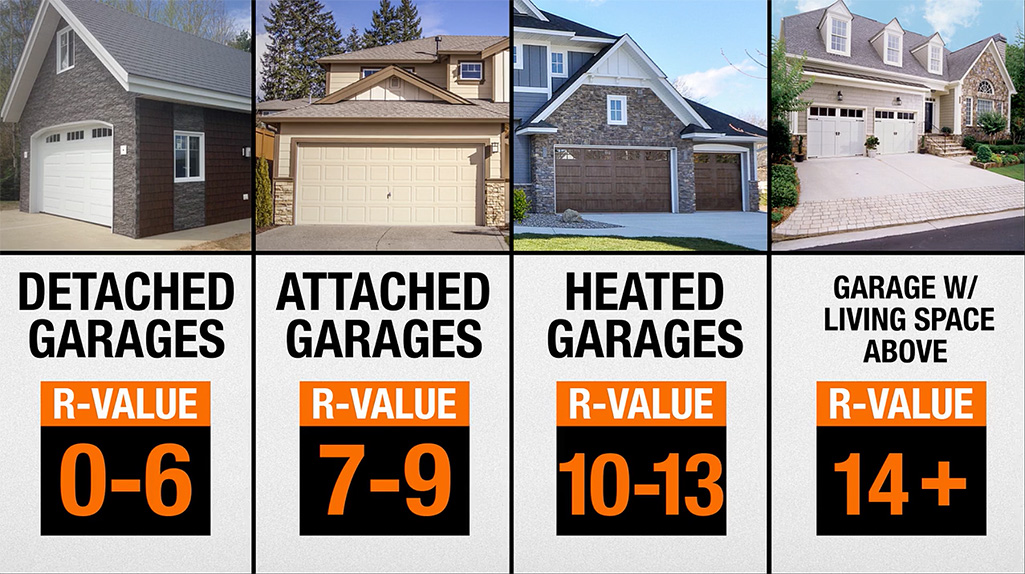
Before learning how to insulate a garage door, it’s important to know about insulation R-values. R-value measures the effectiveness of a type of insulation. Typically, a higher R-value means better climate control and better energy efficiency for your home. Insulation R-values vary based on the type, thickness and density of the insulation material. The total R-value of your insulated areas can increase as you stack layers of insulation.
A high R-value for your DIY garage door insulation will keep your garage warmer in the winter and cooler in the summer. High R-value insulation, however, is often more expensive than low R-value insulation. To best insulate your garage and stay within budget, choose your insulation type based on the type of garage and garage door you have.
Follow these tips to choose the right insulation for your garage door:
- Detached, non-heated garages usually only need insulation with an R-value of 0 to 6 to improve their climate control. These garages won’t affect your home’s heating bills, so you don’t need to worry about energy-efficiency from insulation.
- Attached, non-heated garages should have insulation with an R-value of 7 to 9, since heat loss in this type of garage can affect your home’s heating costs.
- Heated garages should have insulation with an R-value of 10 to 13.
- Garages with a living space above them should have insulation with an R-value of at least 14 to keep the living space comfortable.
- Steel garage doors are naturally insulated better than wooden garage doors. If you have wooden garage doors, insulating them should be a high priority if you want to improve the temperature of your garage.
- Wooden frame-and-panel garage doors need a rigid insulation such as foam board.
- Metal garage doors can use any type of insulation. An affordable option is fiberglass insulation batts.
- Insulating a garage door can be even easier with DIY garage door insulation kits. These kits provide pre-cut insulation, fasteners or tape and sometimes tools like gloves and utility knives.
2. Mark the Door
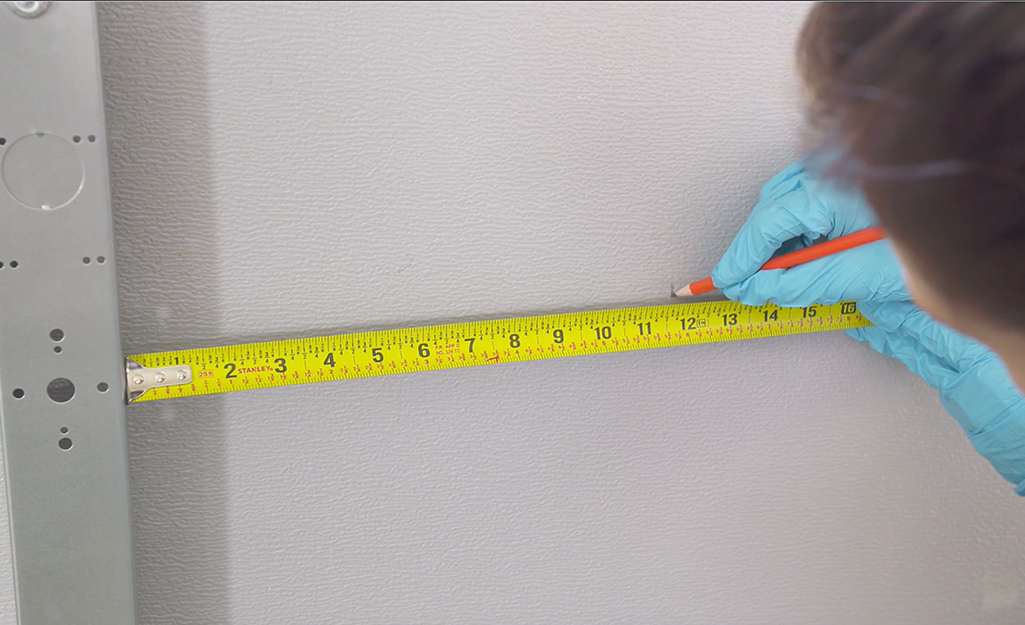
- Once you have the insulation and tools you need, you’re ready to start insulating a garage door. Start by planning the location of the fasteners.
- Make two marks on each door panel that are 12-inches in from each side and vertically centered.
3. Apply Double-Sided Tape

- Firmly press the double-sided tape onto your pre-marked spots on the door panels.
4. Attach Retainer Clips to Tape
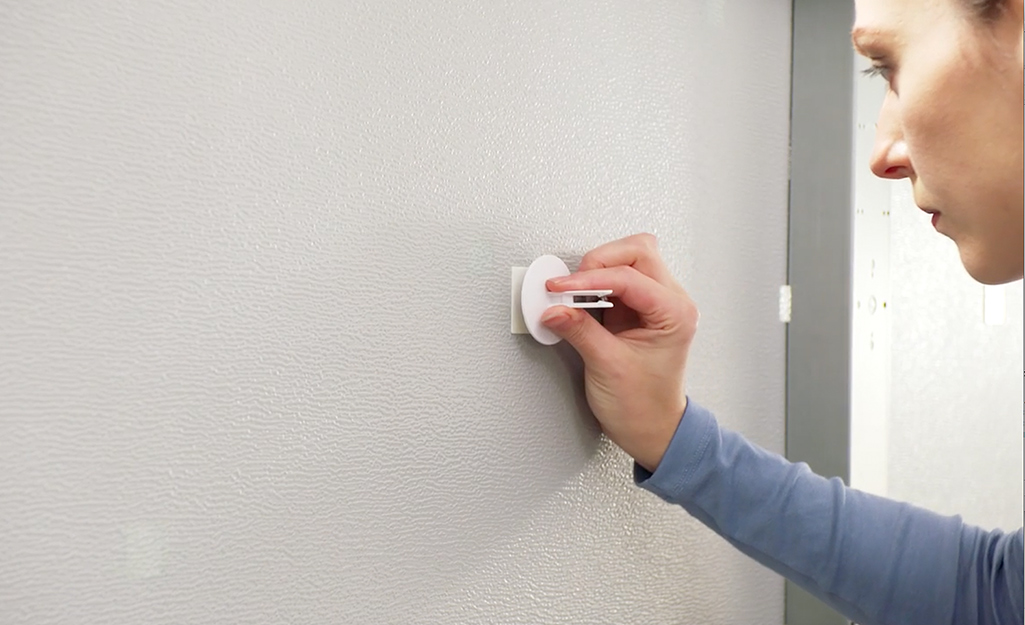
- Remove the front side peel of the adhesive tape.
- Firmly press a retainer clip onto each piece of tape.
5. Measure Door Panels
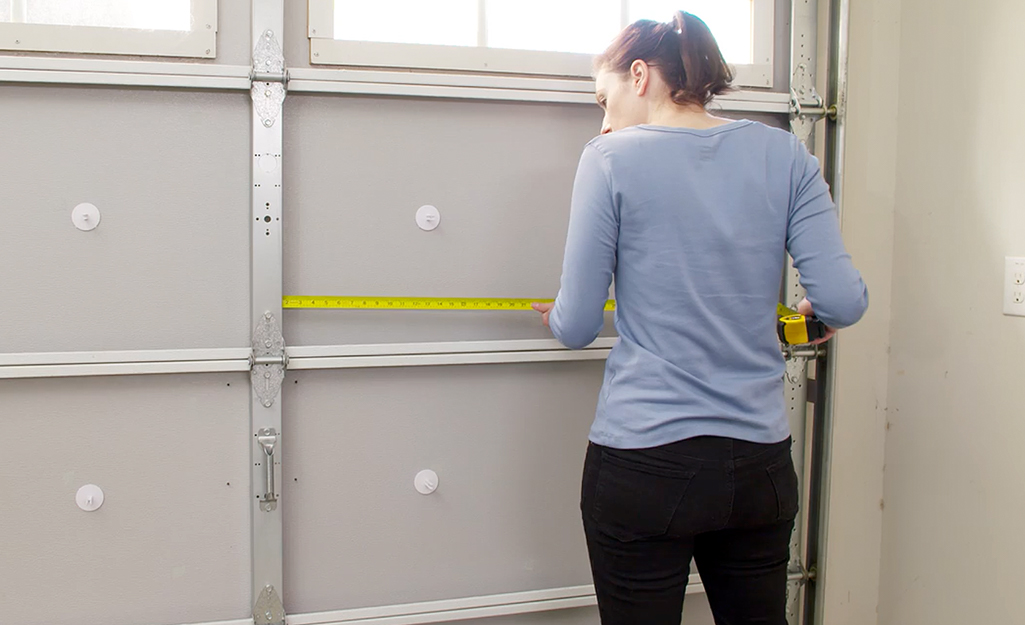
- Measure each door panel.
- Note each individual panel’s measurements as they may not be the same size.
6. Cut Insulation to Size
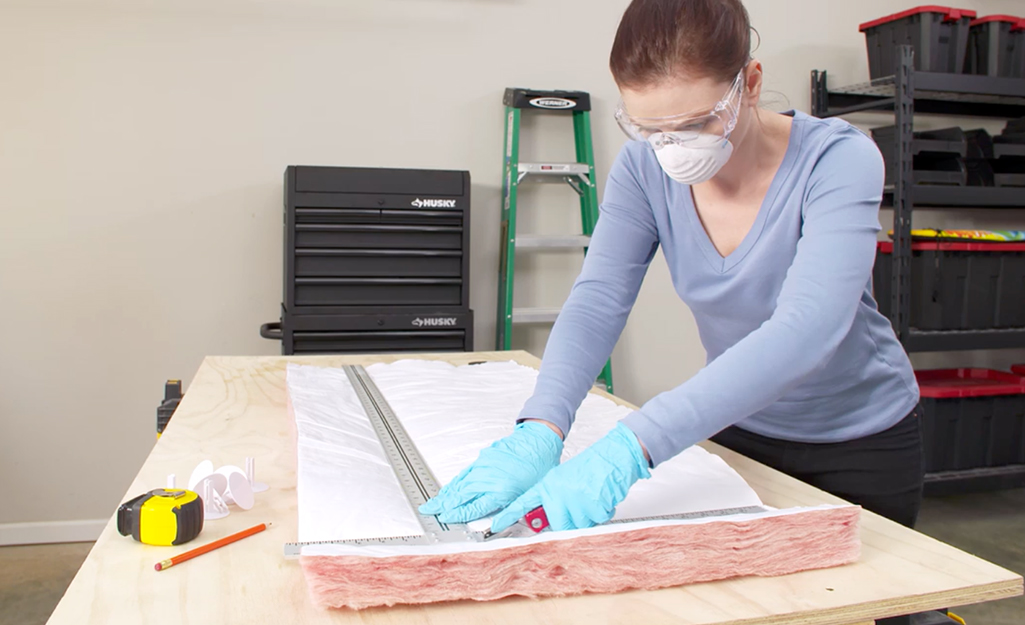
- Cut a piece of insulation for each panel. Cut 1- to 2-inches longer than your door panel measurements.
- Peel off the excess insulation.
Safety: Many types of insulation, especially fiberglass insulation, are skin and eye irritants. Wear gloves and safety glasses to protect yourself when working with insulation.
7. Tuck Insulation into the Door Panels
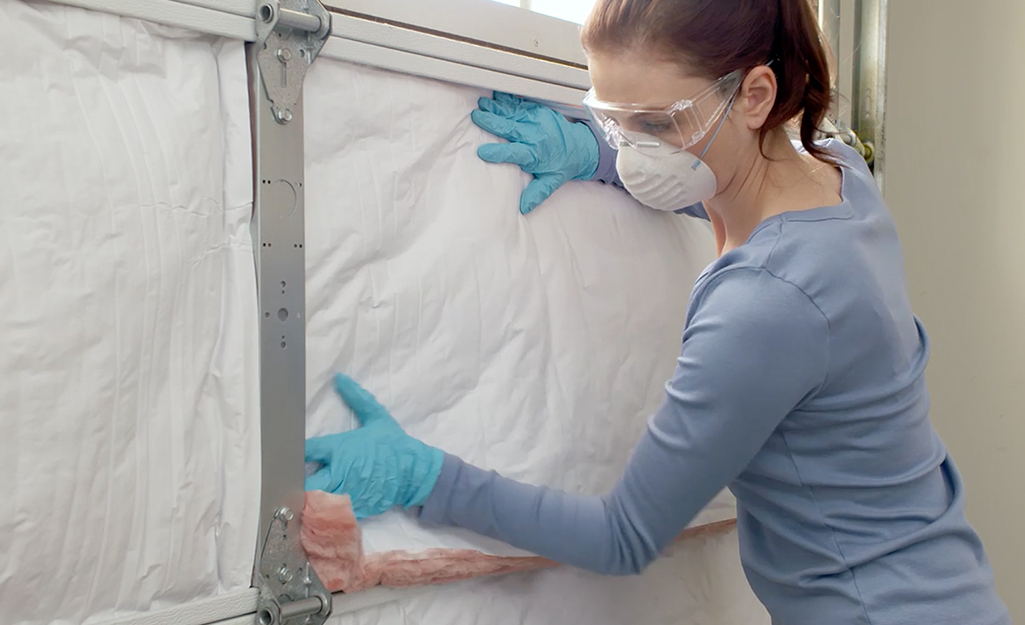
- Per your previous measurements, tuck each insulation piece into its correct door panel with the vinyl side facing outward.
- If you chose an insulation with a reflective radiant barrier, the reflective side should also face outward.
8. Fasten Retention Clips

- Push the insulation flat against the door and feel for the retention clips.
- Slice 1/2-inch slits through the insulation to allow the retention clips to pass through.
- Attach the front pieces of the retention clips to the back pieces to secure the insulation panels.
Now that you know how to insulate a garage door, you can improve the temperature and efficiency of your garage.
